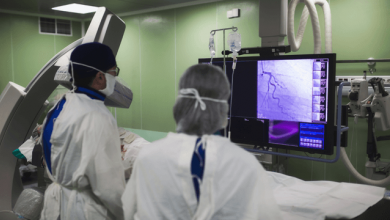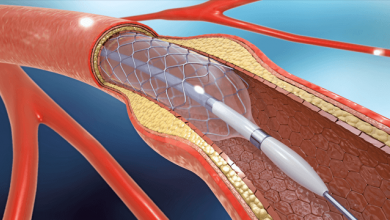Search results
PROMOTED
Author(s):
Nicolas M Van Mieghem
,
Kendra J Grubb
,
David Hildick-Smith
,
et al
Start date:
Mar 26, 2024
Author(s):
Tom Adriaenssens
,
Giovanni J Ughi
,
Jan Dhooge
,
et al
Added:
3 years ago
In the bare metal stent (BMS) era, several intravascular ultrasound(IVUS) studies have validated the strategy of reducing in-stent restenosis rates by a strict adherence to an optimal stent implantation technique, predominantly by avoiding stent underexpansion.1 In a first phase after the introduction of drug-eluting stents(2003), the spectacular reduction in restenosis rates, based on…
View more
Author(s):
Ashok Seth
,
Sajal Gupta
,
Vivudh Pratap Singh
,
et al
Added:
3 years ago
In 1995, stent implantation became the second revolution in interventional cardiology when Colombo et al. demonstrated that intravascular ultrasound (IVUS)-guided post-dilatation of stents to achieve optimal expansion and larger lumens led to reduced restenosis and stent thrombosis (ST).1 This ‘bigger is better’ hypothesis became the technical cornerstone of all stent implantation in the bare…
View more
Author(s):
Nienke S van Ditzhuijzen
,
Jurgen M Ligthart
,
Nico Bruining
,
et al
Added:
3 years ago
The indications for percutaneous coronary intervention (PCI) have expanded steadily during the past years. After the days of the revascularisation of obstructive coronary artery disease (CAD) by balloon angioplasty,1 the introduction of coronary stents has essentially contributed to PCI being one of the most frequently performed invasive therapeutic procedures worldwide. Bare metal stents (BMS)…
View more
Author(s):
Adrian P Banning
,
Kristin L Hood
,
Aloke V Finn
,
et al
Added:
3 years ago
Patients with diabetes have abnormalities in the growth and function of arterial smooth-muscle and endothelial cells and consequently have a particularly aggressive and diffuse pattern of atherosclerosis, leading to increased cardiovascular complications and mortality compared with the non-diabetic population.1–4 However, the molecular signalling underlying the accelerated atherosclerosis in…
View more
Author(s):
Sudheer Koganti
,
Tushar Kotecha
,
Roby D Rakhit
Added:
3 years ago
Intracoronary imaging is able to aid the interventional cardiologist in the characterisation of atherosclerotic plaque morphology, in optimising stent sizing, and in minimising the complications associated with percutaneous coronary intervention (PCI). Intravascular ultrasound (IVUS) and optical coherence tomography (OCT) are commonly used methods, while newer spectroscopic methods are under…
View more
Author(s):
Raban Jeger
,
Thomas Nestelberger
Added:
3 years ago
Coronary artery disease (CAD) remains a major cause of morbidity and mortality despite major improvements in primary and secondary prevention strategies. Percutaneous coronary intervention (PCI) or surgical revascularisation may be indicated in many patients with acute or stable CAD.1
Since the first coronary intervention using catheter mounted balloons, percutaneous treatment of CAD has evolved…
View more
Author(s):
Nikhil Pal
,
Jehangir Din
,
Peter O’Kane
Added:
3 years ago
The reduction in risk of cardiac death offered by revascularisation in patients with moderate to large amount of stress-induced myocardial ischaemia has driven advancements in percutaneous coronary intervention (PCI) technology over the last four decades.1 However, despite significant progress in the techniques, equipment and pharmacotherapy, target lesion failure remains the Achilles heel of a…
View more
Platinum Chromium Stent Series
Author(s):
Dominic J Allocco
,
Mary V Jacoski
,
Barbara Huibregtse
,
et al
Added:
3 years ago
Article
Author(s):
Nitin Chandramohan
,
Jonathan Hinton
,
Peter O’Kane
,
et al
Added:
1 month ago














